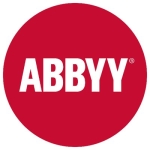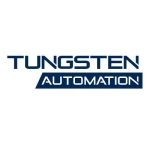What is our primary use case?
My experience in using UiPath, in general, is in developing traditional bots, assisted bots. There are the typical mundane applications that we're trying to remove in order to add value to customers.
The solution is used for extracting information from documents and consolidating data, maybe from various Excel sheets. I've used applications, such as PDF, Tableau, and a number of different entities as well. It varies.
How has it helped my organization?
I haven't really followed up so much in-depth, however, I know that a lot of the end-users that I've worked with and talked to, that have removed some of the processes, think it’s great. I've got many more strategic types of tasks to do. The one thing users look forward to when they come to work is when something’s been removed from their plate, one piece at a time.
What is most valuable?
Collectively, I find the UiPath features really complement each other. If you have one tool or another resource available, you're really able to get it into a solution.
They've implemented their stuff very well, considering how fast they've come up with new tools. Usually, it’s a messy situation, however, with UiPath, I've not found that to be the case. It's pretty impressive, the rate at which new tools are released and how well they're thought out, and how usable they are.
From an employee morale perspective, the company is getting positive feedback.
We’ve seen some reduction in human errors and time savings. Depending on what it is, your time savings could be two to three to ten times more in terms of time saved. It’s easy, too. Error reduction is absolutely almost down to nothing.
In terms of cost savings, some of this was done pretty casually, so the numbers are maybe not official. We’ve got 20 data samples, and we're timing it exactly. However, when it comes to time savings, there's always been a very significant amount.
When it comes to ease of use, some of the tools they're providing are in discovery or task capture. You can go out and send this off to somebody and it's pretty self-explanatory in a half hour. Prior to that, people might be using different steps with built-in Windows pieces, which is horrible for capturing automation. If all you have is a hammer, everything looks like a nail. Therefore, adding in this ability to annotate the screenshots with ease, that alone in the development process helps significantly. I'm really liking the discovery tools that complement the product.
All these discovery tools are making building automation easier, from an analyst perspective. It removes the wheat from the chaff and narrows things down, and you begin to see what you need. By clicking on different elements, you can see where they can annotate. It saves a lot of back and forth and time. Not only does the subject matter expert not have to spend time away from their work, you're also not going back and forth and trying to clarify items any longer. It makes things more compact and it’s easier to get to the end goal.
I completely trained on my own as a developer with the UiPath Academy. I was able to do it for free. It's the only onboarding I received. I had nobody else to go to, except for the videos and the forums.
The greatest value of UiPath Academy is that it is free. Now, it’s completely about motivation, and not cost-prohibitive. You just need to be motivated to learn and you can jump in. You don’t have to spend something like $800 and have maybe a company sponsoring you to get started.
People, in their careers, can become relevant again. If they are in a dying industry or disrupted industry, they can get into something that's growing rapidly. If you have a computer, and a decent internet connection, you can have a new career in a fairly short amount of time.
What needs improvement?
The forum's a great place, however, for a new person, it was better some years ago. It's grown too fast, and it's not that nimble. Previously, if you asked questions, the response time was quicker.
Since I've learned UiPath, there's so many more people rushing and getting into it. With the demand for RPA jobs, the ratio of expertise to novices is very, very low. Before you had a small community and you had a lot of experts and just a few new people trickling in at a time. The influx of new people, it's just growing factor by factor. Where previously there was one person that only had a few questions to answer, now maybe that ratio is now 20 or 30 people. You're not going to get the answers that you need as fast. Luckily, the quality of the Academy is so good, if you look around, you can eventually figure things out.
The issue is that, with so many people, a lot of questions are getting asked before anyone even looks to see if an answer is already there. It tends to make it harder to find relevant, real questions that need to be answered. There are people who are not doing the due diligence and looking at the tags and spending a little extra time before throwing the question out. It makes that part hard to manage.
With people that have already been up-skilled, or already been skilled in the past, UiPath needs to find a way to send some sort of notification to them when items update or change. They need to send out a message to experienced developers to say: “Hey, look at this and push it out."
If you're not going to the Academy and looking for something new, there needs to be some sort of way to say: “Hey, you've been certified. You haven't been in this course. You should look at these things.” I started looking at the Academy and found new elements. When I mentioned something, like, "What's that?" the new guys were aware due to the fact that it was in the Academy from when they started and was not there when I finished.
Basically, just having some sort of mechanism for spreading awareness to existing developers, or pushing something out to them, maybe even through the interface, would be helpful. Whether it’s a little highlight or a little icon to alert users to “hey, here’s something new, something pushed out.” And it’s not just something where you have to go in and read some boring five or six pages of notes, to know that this thing is there. It needs to be visual.
For how long have I used the solution?
I started using UiPath, which started with training, in the fourth quarter of 2018.
What do I think about the stability of the solution?
It's a very stable product. I haven't had any issues. If I found or thought something was unstable or something, it usually ended up being me, or an operator error.
What do I think about the scalability of the solution?
I've seen UiPath scaled. Personally, I haven't had issues one way or the other, however, I've heard good things. That said, I can't speak too much on it from the perspective of personal experience.
How are customer service and support?
I have had some interaction. They had a pretty good SLA, in terms of response time. Of course, that has nothing to do with actual solution time. That said, what I remember with everything was that nothing stood out. Usually, you remember some anger or something. I didn't have anything like that.
Which solution did I use previously and why did I switch?
I'm certified in Automation Anywhere as well. Right now, Automation Anywhere always has two products out, in the sense of getting ready to move into their A360 with the newer product. They're just trying to get that product to maturity. Right now, we have different deployments. Automation Anywhere is cloud-native.
While they're both RPA, they each have I think a different niche, depending on what the customer needs.
As a developer, the learning curve in version 11, the prior version, had an easier learning curve compared to UiPath. Automation Anywhere has an edge, in terms of ease of learning for business users and citizen developers.
360 has made the learning curve harder. It's going to add more features, more flexibility. And with that comes a learning curve. Still, the learning curve might be a little easier.
How was the initial setup?
My deployment experience was not just through UiPath. If anything, I'm pretty agnostic to any platform. I was an analyst, and I was involved with, in general, putting items into production, and going back and forth with developers, and seeing if there were any issues or problems.
I've talked to other developers, and I haven't heard of any particular issues or problems, with UiPath, or anything that was more than just human error or an oversight.
What's my experience with pricing, setup cost, and licensing?
If you're smart about it, you understand what your needs are, you can get an ROI out of it without having to go get the full-blown solution. You don't want to drop $20,000 on an orchestrator unnecessarily. You can ease into it, into adoption, without dropping a lot of money. Maybe some attendant bots, and an unattended locally on a large scale, in a small area.
If you do that and start easy, you'll get a return on investment. Eventually, when we start scaling, we'll pay for the orchestrator. You'll need that when you start getting a lot of bots, and it becomes like herding cats. It gets crazy. That's what you need an orchestrator for. While you can avoid a cost at a certain point, you're probably getting diminishing returns, and then it's going to be more costly to manage something all over the place. It's best to start small and then add on.
What other advice do I have?
We haven’t been using an orchestrator. It’s a bit like having your hands tied behind your back, as you're not using some of the features that are available with that. However, it still provides these workarounds. You are able to still do some really robust work. It's been great.
We are using, more or less, the more recent versions of the solution.
Before starting with UiPath, a company needs an understanding of the culture at their company. You need to ask if your employees are resistant to change. Certain companies where people are entrenched in their ways, or scared of bots taking their job will be worried. A company needs to lean in and give them an understanding of expectations and pay attention to them before starting. Just pushing it might throw people off.
The personalities of people are the biggest factor. I used to come from a lean Six Sigma background. When companies bring in these Six Sigma programs, it's the same thing - resistance. People say “oh, you're the job cutter.”
People throw that out as automation, and I say, "Hey, people have been automating since steam engines. It's been consistent. It's just the face has changed a little bit. It finally hopped back onto computers. However, automation has been nonstop."
You just have to realign and adjust yourself. You can’t be resistant to change. Change could be a good thing. Not all things are, however, workers need to be rational and think about it. If your company doesn't move faster, adapt quicker, then your company's going to go away, and everyone will be gone. It’s competitive. That's sports. That's business.
Overall, from what I've used, and what I've touched, and some of the things I've seen without actually putting my hands on it, I'd give UiPath a nine out of ten.
I'm just not the type to give out tens so freely. I haven't gone deep and wide enough to touch everything. From what I've seen before, if you span that out overall, I'd probably put them up in the nine range, personally.
Disclosure: My company does not have a business relationship with this vendor other than being a customer.






















